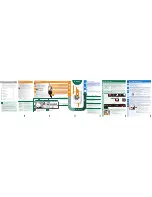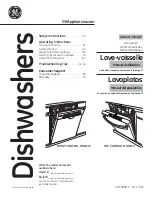
Detergent
en-us
21
Detergent
Description
ing and dam-
age the appli-
ance.
Detergent con-
taining chlorine
This may leave
chlorine
residue on
dishware.
10.3 Information on
Detergent
Follow the instructions on deter-
gents in everyday use.
¡
Detergents marked as "ecologi-
cal" (environmentally friendly)
generally contain lower levels
of active agents or none at all.
The cleaning effect may be re-
duced.
¡
Adjust the rinse aid and the wa-
ter softening system settings in
accordance with the detergent
or combination detergent in
use.
¡
Any rinse aid component of a
combination detergent has lim-
ited effectiveness. You will
have better results using a sep-
arate rinse aid.
¡
To prevent sticking, only touch
detergents in a water-soluble
pouch with dry hands and only
ever place them in a dry deter-
gent dispenser.
¡
Even if the rinse aid and spe-
cial salt refill indicators light up,
the wash cycles will run prop-
erly with combination deter-
gents.
¡
Use tablets with enhanced dry-
ing results.
10.4 Adding Detergent
1.
To open the detergent dis-
penser, press the locking latch.
2.
Add the detergent to the dry
detergent dispenser.
3 tbsp
(45 ml)
1.75 tbsp
(25 ml)
1 tbsp
(15 ml)
If you are using tablets, one is
enough. Insert the tablets in a
horizontal position.
If you are using powder or liq-
uid detergent, follow the manu-
facturer's instructions and
quantities for dosage in the de-
tergent dispenser.
1.5 to 1.75 Tbsp (20 ml – 25
ml) detergent is sufficient for
normal soiling. If dishware is
only lightly soiled, slightly less
than the amount of detergent
specified is usually sufficient.
3.
Close the lid of the detergent
dispenser.
a
The lid clicks into position.
a
The detergent dispenser will
open automatically at the opti-
mum time during the cycle.
Powder or liquid detergent will
spread around the washing
tank and dissolve there.
Tablets will fall into the tablet
collecting tray and dissolve in
the right dosage. In order to en-
sure that tablets can dissolve
Содержание SPE53B55UC
Страница 55: ......
















































